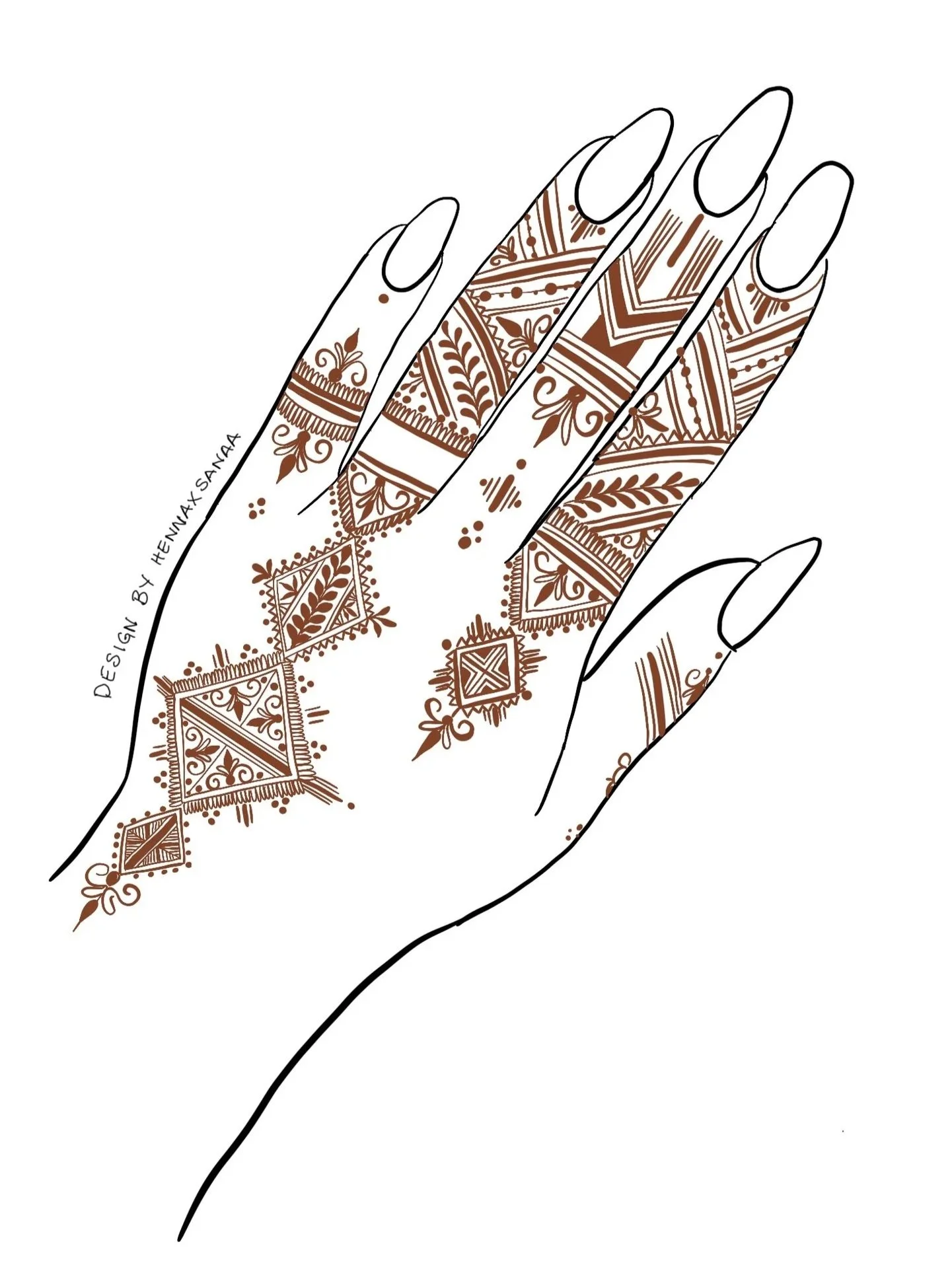Welcome to Henna by Ren.
only organic and all natural henna & hengua - original designs - appointments & events available
What is Henna?
Henna is a reddish dye made from the dried and powdered leaves of the Henna tree to make a pigment. When mixed into a paste, henna can leave a temporary “tattoo” on the skin that lasts for 1-2 weeks. This pigment can also be used to dye hair and fabric.
Where Does Henna Come From?
Henna has been used since Ancient Egypt to dye skin, fabric, and hair. The art of Henna, called “Mehndi” in Hindi and Urdu, has been practiced in Pakistan, India, Africa, and the Middle East for over 5000 years. Today, Henna art is worn to celebrate special occasions, symbolizing good health, prosperity, wisdom, and more! Designs can vary by country
Indian Mehndi
Pakistani Mehndi
Origins
-
often detailed, intricate and dense
mostly on the hands and arms
feature traditional motifs and religious symbols.
varies by region
-
less dense than Indian Mehndi
flowing large designs
often features floral and vine patterns
-
blend of Indian and Arabic styles
bold designs like Arabic Mehni with Indian Mehndi’s intricate patterning
elaborate floral motifs and religious accents
often covers hand and arm
-
large bold patterns
geometric shapes & abstract symbols
emphasizes open spaces
varies by region
-
most commonly seen style is called Fassi
features geometric shapes: triangles, squares and lines
completely covers area being hennaed
very few solid blocks of color
nearly no pattern repetition, often structured and symmetrical
-
commonly seen in America
combines from all traditional forms
includes contemporary elements a
draws from all over the world
African Mehndi
Moroccan Mehndi
Arabic Mehndi
Western Mehndi
Placement
-
images of opening and offering; allows a person to receive and offer blessings
-
protection & shielding
-
a divine point of contact where Human connects with the Earth
Common Symbolism
Birds: messengers between Heaven and Earth
Butterflies: transformation and new beginnings
Circles: the cycle of life and the fulfillment of destiny
Dragonflies: change and rebirth
Eye: the reflection of the evil eye; turning any evil wishes back onto the gazer; spiritual protection
Flowers & flower petals: pure happiness and joy, beauty, and new beginnings
Lotus: the awakening of the human soul; grace, beauty, creativity, sensuality, femininity, and purity
Om: mantra that broadly refers to the self and universal spirit
Paisleys: fertility and luck
Peacock: beauty
Peacock feathers: prosperity
Sahasara: ancient Lotus-like symbol meaning unity; uniting the soul with the "Divine Source"
Snakes & lizards: seekers of enlightenment
Swans: success and beauty
Vines & leaves: devotion, vitality, strength, longevity
Click above for the full FAQ page.
-
Henna lasts 7-10 days with proper aftercare. Most of my clients and myself can have it last between 2-3 weeks.
-
My “darkness blend” is the same all natural henna mixed with a small amount of pure jagua fruit juice. Jagua itself can leave a deep blue stain that often appears black. This results in a deeper brown stain, in contrast to the reddish, lighter brown associated with henna.
-
In heat, henna only needs a minimum of 2 hours to stain. Keeping the paste on for 6-8 hours is recommended to allow the paste to fully set.
-
If the design is still wet and we are not in proximity for me to fix it, either remove the smudged area with a dry paper towel. If the design fully smudged, it is better to remove all of the paste with a dry paper towel. Avoid water for 24 hours after to allow the stain to set. It is likely to still stain for up to a week—just may not darken as deeply or last as long.













